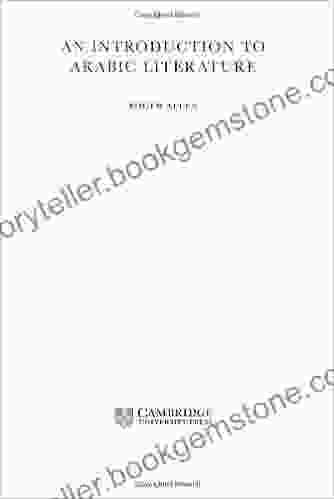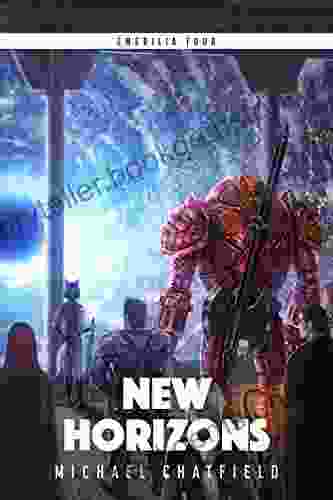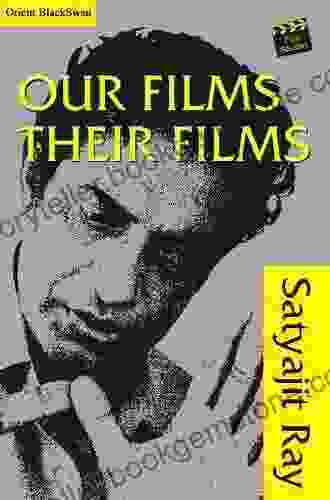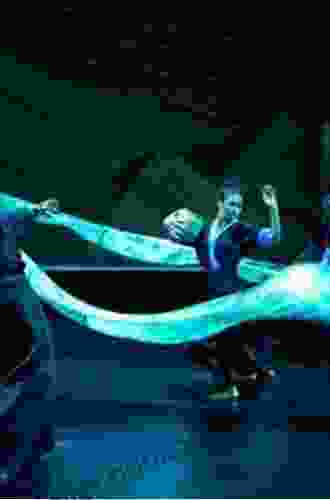An Introduction to Arabic Literature: A Journey Through Time, Language, and Culture

Arabic literature is a rich and diverse tapestry of words and ideas, spanning centuries and transcending geographical boundaries. From its humble beginnings in the sands of Arabia to its flourishing heights during the Golden Age, Arabic literature has left an indelible mark on the world's literary landscape.
4.8 out of 5
| Language | : | English |
| File size | : | 2958 KB |
| Text-to-Speech | : | Enabled |
| Print length | : | 288 pages |
| Lending | : | Enabled |
| Screen Reader | : | Supported |
The Origins: Pre-Islamic Arabia
The roots of Arabic literature can be traced back to pre-Islamic Arabia, a time when the spoken word reigned supreme. Poetry served as a powerful medium of expression, with tribal poets using verse to chronicle battles, celebrate heroes, and lament losses. 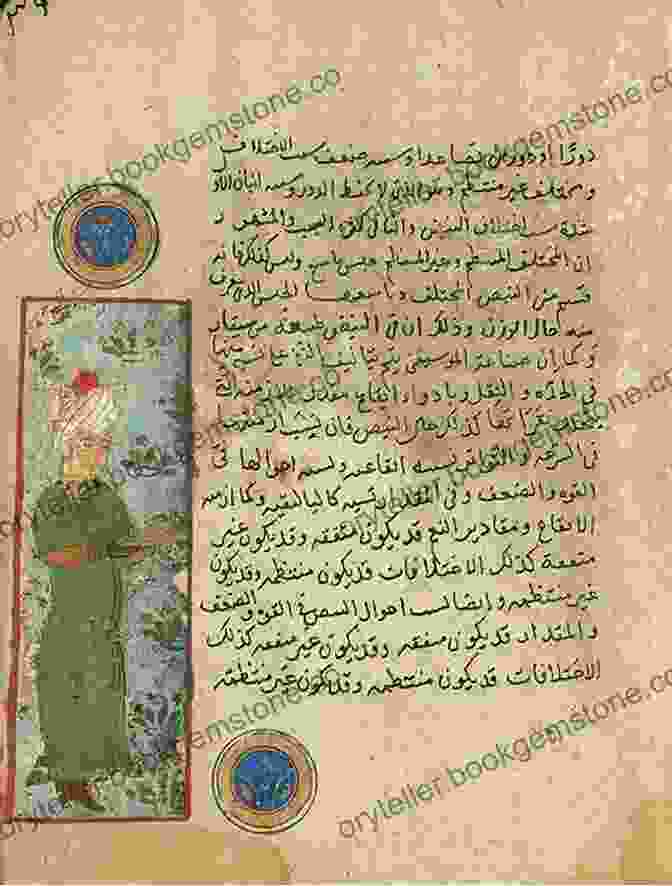
Among the most renowned pre-Islamic poets was Imru' al-Qais, known for his evocative descriptions of desert landscapes and his poignant love poems. His work, along with that of other poets such as Zuhair ibn Abi Sulma and Labid ibn Rabia, laid the foundation for the rich literary tradition that would follow.
The Rise of Islam and the Golden Age
The advent of Islam in the 7th century CE marked a turning point in Arabic literature. The Quran, the sacred text of Islam, became a source of inspiration for poets and prose writers alike. Islamic themes and imagery infused Arabic literature, giving rise to a new era of artistic expression.
The Abbasid Caliphate, established in Baghdad in the 8th century, ushered in the Golden Age of Arabic literature. Under the patronage of enlightened caliphs, scholars, poets, and philosophers flourished. Baghdad became a thriving hub of intellectual and literary activity, attracting luminaries from across the Islamic world.
During this period, Arabic literature reached its zenith. Poets like Abu Nuwas and Al-Mutanabbi produced exquisite verse that celebrated love, wine, and the joys of life. Prose writers such as Al-Jahiz and Ibn al-Muqaffa excelled in the fields of satire, animal fables, and epistolary literature.
The Diversification of Genres
As Arabic literature continued to evolve, new genres emerged. The 9th century saw the rise of the maqama, a type of episodic prose narrative that combined humor, satire, and social commentary. The 10th century witnessed the development of the zajal, a form of vernacular poetry that became popular among the common people.
The 12th century marked the emergence of the Arabic novel, with Ibn Tufail's Hayy ibn Yaqzan being considered one of the earliest examples of the genre. This philosophical novel explored themes of self-discovery, education, and the nature of humanity.
The Influence of Arabic Literature
The impact of Arabic literature on world literature cannot be overstated. During the Middle Ages, Arabic texts were translated into Latin and disseminated throughout Europe, influencing the development of Western literature, philosophy, and science.
The works of Arabic scholars and poets were instrumental in the rise of the European Renaissance. Figures such as Dante Alighieri, Geoffrey Chaucer, and William Shakespeare all drew inspiration from Arabic sources.
Today, Arabic literature continues to thrive and evolve. Contemporary Arabic writers from across the globe are producing works that explore a wide range of themes, from personal experiences to social and political issues. The rich legacy of Arabic literature serves as a constant source of inspiration for these writers.
Key Figures in Arabic Literature
- Imru' al-Qais: Pre-Islamic poet known for his evocative descriptions of desert landscapes and poignant love poems.
- Abu Nuwas: Abbasid poet known for his witty and sensual verse celebrating love, wine, and the joys of life.
- Al-Mutanabbi: Abbasid poet known for his panegyric poems and his exploration of themes of heroism and destiny.
- Al-Jahiz: Abbasid prose writer known for his satirical writings on social and political issues.
- Ibn al-Muqaffa: Abbasid prose writer known for his animal fables and his translation of the Indian epic Panchatantra into Arabic.
- Ibn Tufail: Andalusian philosopher and physician known for his novel Hayy ibn Yaqzan, which explored themes of self-discovery and the nature of humanity.
Themes in Arabic Literature
- Love: A central theme in Arabic poetry and prose, often expressing both the joys and sorrows of romantic relationships.
- Wine: Another common theme in Arabic literature, with poets celebrating the pleasures and transformative power of wine.
- Nature: Arabic poets have a deep appreciation for the beauty and power of the natural world, often using vivid imagery to describe landscapes and animals.
- War and heroism: Pre-Islamic poets often chronicled battles and celebrated the bravery of warriors, while later writers explored the complexities of war and its impact on individuals and society.
- Social and political issues: Arabic literature has also been used to address social and political issues, with writers using satire, allegory, and other literary devices to critique injustice and promote social change.
Arabic literature is a vast and vibrant tapestry, spanning centuries and encompassing a diverse range of genres, themes, and influences. From the evocative poetry of pre-Islamic Arabia to the philosophical prose of the Golden Age, and from the satirical writings of the Abbasid period to the contemporary works of today's authors, Arabic literature has left an indelible mark on the world's literary landscape. Its rich legacy continues to inspire and enrich readers around the globe.
4.8 out of 5
| Language | : | English |
| File size | : | 2958 KB |
| Text-to-Speech | : | Enabled |
| Print length | : | 288 pages |
| Lending | : | Enabled |
| Screen Reader | : | Supported |
Do you want to contribute by writing guest posts on this blog?
Please contact us and send us a resume of previous articles that you have written.
 Best Book
Best Book Page Flip
Page Flip Bookshelf
Bookshelf Literary loom
Literary loom Chapter
Chapter Bookish
Bookish PageTurner
PageTurner Bibliophile
Bibliophile Story
Story Inkwell
Inkwell Bookworm
Bookworm Labyrinth
Labyrinth Plot Twist
Plot Twist Prose
Prose Paperback
Paperback Storyteller
Storyteller Sanctuary
Sanctuary Fiction
Fiction Reading
Reading Chronicle
Chronicle Read
Read Blaze Ward
Blaze Ward Kathy Kolbe
Kathy Kolbe Patrick Rothfuss
Patrick Rothfuss John H Groberg
John H Groberg Laura Davis Chanin
Laura Davis Chanin Joseph Wambaugh
Joseph Wambaugh Ashleynicole
Ashleynicole Martin Kemp
Martin Kemp Keller Easterling
Keller Easterling Anne Moody
Anne Moody Christopher Simmons
Christopher Simmons Shami Stovall
Shami Stovall Sue Miller
Sue Miller Jason Louis
Jason Louis John Izbicki
John Izbicki Lena Grey
Lena Grey Carl Stubblefield
Carl Stubblefield Miss Jenesequa
Miss Jenesequa George Huppert
George Huppert Chris Cozen
Chris Cozen Jay Allan
Jay Allan Ashley Mahlberg
Ashley Mahlberg David Deal
David Deal Deborah Paris
Deborah Paris Richard Pikesley
Richard Pikesley Joseph Birchall
Joseph Birchall Jean Guerrero
Jean Guerrero Arthur Bartow
Arthur Bartow Donald Murray
Donald Murray Clive Hallett
Clive Hallett Woody Allen
Woody Allen Arne Dehli
Arne Dehli George Bird Grinnell
George Bird Grinnell Yuk Hui
Yuk Hui Kris Jenner
Kris Jenner Anthony Slide
Anthony Slide Carne Griffiths
Carne Griffiths Betty Reynolds
Betty Reynolds Tracy Birdsall
Tracy Birdsall Anne Mccaffrey
Anne Mccaffrey Sarah Crafts
Sarah Crafts Jan Cohen Cruz
Jan Cohen Cruz Pankaj Mishra
Pankaj Mishra Jason Frye
Jason Frye Tiffany Roberts
Tiffany Roberts Katja Pantzar
Katja Pantzar John Woolf
John Woolf Mark Baskinger
Mark Baskinger Maxine Leeds Craig
Maxine Leeds Craig Anton Roux
Anton Roux Riva Lehrer
Riva Lehrer Pamela Des Barres
Pamela Des Barres H Dolmetsch
H Dolmetsch Arrigo Cipriani
Arrigo Cipriani Pat Cadigan
Pat Cadigan Koji A Dae
Koji A Dae Antoinette Nora Claypoole
Antoinette Nora Claypoole Art Wolfe
Art Wolfe Jonathan Strahan
Jonathan Strahan New Edition Kindle Edition
New Edition Kindle Edition Fifi O Neill
Fifi O Neill David Larocca
David Larocca Brian W Smith
Brian W Smith Arielle Silverman Ph D
Arielle Silverman Ph D Philip Tyler
Philip Tyler Christine Denniston
Christine Denniston Sarah Vallance
Sarah Vallance Arlo Adams
Arlo Adams Bernadette Murphy
Bernadette Murphy Anne Hillerman
Anne Hillerman Avanti Centrae
Avanti Centrae Arthur H Buckley
Arthur H Buckley Edgar Rice Burroughs
Edgar Rice Burroughs Asimina Nteliou
Asimina Nteliou Stephen Moss
Stephen Moss Meyer Berger
Meyer Berger J R Osborn
J R Osborn Robert Beverly Hale
Robert Beverly Hale Chris Saper
Chris Saper Karen Ordahl Kupperman
Karen Ordahl Kupperman Michael Evamy
Michael Evamy Tamron Hall
Tamron Hall Regina Held
Regina Held Steven Bradley
Steven Bradley Annie Ernaux
Annie Ernaux Edgar Degas
Edgar Degas Hanife Hassan O Keeffe
Hanife Hassan O Keeffe S H Jucha
S H Jucha Tony Randgaard
Tony Randgaard Franklin Horton
Franklin Horton Bwwm Love
Bwwm Love Detlev Henschel
Detlev Henschel Jennifer Homans
Jennifer Homans Eugenio Barba
Eugenio Barba Rebecca Kaye
Rebecca Kaye Anne Manera
Anne Manera James D Umbach
James D Umbach Michael Jan Friedman
Michael Jan Friedman Sadhna Shanker
Sadhna Shanker Axel Hacke
Axel Hacke Lorna Luft
Lorna Luft Jaime Castle
Jaime Castle Wesley B Turner
Wesley B Turner Michael Frank
Michael Frank Maria Venegas
Maria Venegas N L Hudson
N L Hudson Scott Lerman
Scott Lerman Antony Kamm
Antony Kamm Ashley K Stoyanov Ojeda
Ashley K Stoyanov Ojeda Geoff Schumacher
Geoff Schumacher Charles Nordhoff
Charles Nordhoff Juliette Sobanet
Juliette Sobanet Satyajit Ray
Satyajit Ray Anwei Skinsnes Law
Anwei Skinsnes Law Peter Jazwinski
Peter Jazwinski Arthur C Clarke
Arthur C Clarke Karl Ove Knausgaard
Karl Ove Knausgaard Sara Paretsky
Sara Paretsky Tia Williams
Tia Williams Doug Scott
Doug Scott Quentin Tarantino
Quentin Tarantino Karen A Romanko
Karen A Romanko Howard Dully
Howard Dully Ken Seeroi
Ken Seeroi Arleta Pech
Arleta Pech Scott M Madden
Scott M Madden Gloria Mattioni
Gloria Mattioni Annemarie Bean
Annemarie Bean D Levesque
D Levesque Tara Wells
Tara Wells Marta Mcdowell
Marta Mcdowell Steven M Nolt
Steven M Nolt Eric Campbell
Eric Campbell Nancy Nicholson
Nancy Nicholson Emma Read
Emma Read Jan Murphy
Jan Murphy Pat Hall
Pat Hall Barbara Demarco Barrett
Barbara Demarco Barrett Samantha Hahn
Samantha Hahn Christopher Griffin
Christopher Griffin James Maskalyk
James Maskalyk John E Siers
John E Siers Asali Solomon
Asali Solomon Anne Keenan Higgins
Anne Keenan Higgins Smauggy Universe
Smauggy Universe David Consuegra
David Consuegra James Rosone
James Rosone Luke Nguyen
Luke Nguyen Cynthia Winton Henry
Cynthia Winton Henry Anthony Ryan
Anthony Ryan Benjamin Percy
Benjamin Percy Caroline Montague
Caroline Montague Nancy Lee Mccaskill
Nancy Lee Mccaskill Elena M Watson
Elena M Watson Leokadia Schmidt
Leokadia Schmidt Julian Stallabrass
Julian Stallabrass Anthony James
Anthony James John Scarne
John Scarne Anne Rice
Anne Rice Laurel Ann Francis
Laurel Ann Francis Marina Garone Gravier
Marina Garone Gravier John H Clark Iii
John H Clark Iii Annie Keary
Annie Keary Annette Kowalski
Annette Kowalski Ursa Dax
Ursa Dax Mary Ann Scott
Mary Ann Scott Peter James West
Peter James West Nick Cole
Nick Cole Arthur Miller
Arthur Miller Davida Schulman
Davida Schulman Margaret Walker
Margaret Walker Ari Seth Cohen
Ari Seth Cohen Saeed Jones
Saeed Jones Robert Dugoni
Robert Dugoni Laurence Oliphant
Laurence Oliphant Anne Richardson Williams
Anne Richardson Williams Eric Broudy
Eric Broudy Lonely Planet
Lonely Planet Kao Kalia Yang
Kao Kalia Yang Obed Silva
Obed Silva Peter Turchi
Peter Turchi Wakefield Poole
Wakefield Poole R G Collingwood
R G Collingwood Ashley Bristowe
Ashley Bristowe Deborah D Douglas
Deborah D Douglas Scott Westerfeld
Scott Westerfeld Joan Bess
Joan Bess Mary Maccracken
Mary Maccracken Brian Butko
Brian Butko B Ruby Rich
B Ruby Rich Magi Nams
Magi Nams Br Kingsolver
Br Kingsolver Beata Lubas
Beata Lubas Charles Taliaferro
Charles Taliaferro Gene D Phillips
Gene D Phillips Fig Taylor
Fig Taylor George Rathmell
George Rathmell Olive Collins
Olive Collins Tony Peak
Tony Peak Morgan Rogers
Morgan Rogers Jane Monteith
Jane Monteith John Triptych
John Triptych Annette Dozier
Annette Dozier Margaret Scott
Margaret Scott Anthony Jones
Anthony Jones Francesca Fiorani
Francesca Fiorani Aziz Shihab
Aziz Shihab Sonia Misra
Sonia Misra Debbie Macomber
Debbie Macomber W Michael Blumenthal
W Michael Blumenthal Annemarie Strehl
Annemarie Strehl Ernst Lehner
Ernst Lehner Ron Stocke
Ron Stocke Elizabeth David
Elizabeth David Nnedi Okorafor
Nnedi Okorafor Janet Farnsworth
Janet Farnsworth Haruki Murakami
Haruki Murakami Anthony M Strong
Anthony M Strong Noy
Noy Gayatri Gopinath
Gayatri Gopinath Robert J Serling
Robert J Serling Jodi Ohl
Jodi Ohl Anthony C Winkler
Anthony C Winkler Anthony J Melchiorri
Anthony J Melchiorri Paul Brinkley Rogers
Paul Brinkley Rogers Robert Graysmith
Robert Graysmith Beverly Galeskas
Beverly Galeskas Asaf Messerer
Asaf Messerer Vernor Vinge
Vernor Vinge Edward Achorn
Edward Achorn Ashley Antoinette
Ashley Antoinette Austin Channing Brown
Austin Channing Brown Clare Therese Gray
Clare Therese Gray Joe Abercrombie
Joe Abercrombie Anthony M Amore
Anthony M Amore Chloe Fox
Chloe Fox Owen Jones
Owen Jones Wade Motawi
Wade Motawi Approach Guides
Approach Guides Jim Steinmeyer
Jim Steinmeyer Anton Chekhov
Anton Chekhov Dave Bartell
Dave Bartell Shonda Buchanan
Shonda Buchanan Ashley Jaquavis
Ashley Jaquavis Fergal Keane
Fergal Keane Angela Y Davis
Angela Y Davis Jacqueline Rayner
Jacqueline Rayner Jane Sullivan
Jane Sullivan De Andrea
De Andrea Ariana Godoy
Ariana Godoy Jay Caspian Kang
Jay Caspian Kang Haben Girma
Haben Girma Valerie Biden Owens
Valerie Biden Owens Sheila O Flanagan
Sheila O Flanagan Tim Gunn
Tim Gunn Jane Yolen
Jane Yolen W A Bentley
W A Bentley Austin Howe
Austin Howe R A Lafferty
R A Lafferty Lou Sutton
Lou Sutton Lutishia Lovely
Lutishia Lovely Richard Killeen
Richard Killeen Joseph Mcbride
Joseph Mcbride Maureen T Corrigan
Maureen T Corrigan Arthur Murray
Arthur Murray Kim Erwin
Kim Erwin Berlitz Publishing
Berlitz Publishing Annette Insdorf
Annette Insdorf Tamar Diana Wilson
Tamar Diana Wilson Zalmay Khalilzad
Zalmay Khalilzad Rebecca Serle
Rebecca Serle Rosemary Sullivan
Rosemary Sullivan Frank Conroy
Frank Conroy Artemisia Gentileschi
Artemisia Gentileschi Zharel Anger
Zharel Anger Rivers Solomon
Rivers Solomon Lian Hearn
Lian Hearn Armine Von Tempski
Armine Von Tempski Rebecca Keegan
Rebecca Keegan Jesse Martin
Jesse Martin Nathan Deuel
Nathan Deuel Doris Marjorie Moore
Doris Marjorie Moore Mimi Kwa
Mimi Kwa Zeneba Bowers
Zeneba Bowers Ar Corbin
Ar Corbin Tim Downs
Tim Downs Mackinley Helm
Mackinley Helm Catherine E Mckinley
Catherine E Mckinley Eileen Mcnamara
Eileen Mcnamara Billy Connolly
Billy Connolly S C Jensen
S C Jensen Tay Mo Nae
Tay Mo Nae Jasper T Scott
Jasper T Scott Erin Eitter Kono
Erin Eitter Kono Jun Maeda
Jun Maeda Patricia Williams
Patricia Williams Nicole Casey
Nicole Casey Kirsten Anderson
Kirsten Anderson Matthew A Goodwin
Matthew A Goodwin Antonia Fraser
Antonia Fraser Kevin Mannens
Kevin Mannens Joan Tollifson
Joan Tollifson Ashley Brantley
Ashley Brantley August Wilson
August Wilson Valerie Mckeehan
Valerie Mckeehan Waldo Rodriguez
Waldo Rodriguez Dirk Hayhurst
Dirk Hayhurst Kaitlyn Greenidge
Kaitlyn Greenidge Rob Schmitz
Rob Schmitz Prenisha Aja
Prenisha Aja Matthew Jm Carpenter
Matthew Jm Carpenter Oliver Mayes
Oliver Mayes Sarah Winnemucca Hopkins
Sarah Winnemucca Hopkins Pamela Cutter
Pamela Cutter M N Forgy
M N Forgy Talia Beckett
Talia Beckett Tracy Franz
Tracy Franz Vladimir London
Vladimir London Ashley Fiolek
Ashley Fiolek Joan Baxter
Joan Baxter Jose Antonio Salgado Alonso
Jose Antonio Salgado Alonso Chris Weyers
Chris Weyers Scott Hughey
Scott Hughey Robert V Camuto
Robert V Camuto Bill White
Bill White Vanessa Hua
Vanessa Hua Nicholas Sansbury Smith
Nicholas Sansbury Smith Mark Edward Harris
Mark Edward Harris Cathy Curtis
Cathy Curtis Annemieke Mein
Annemieke Mein Antonis Tsagaris
Antonis Tsagaris Kindle Edition
Kindle Edition Heather Vogel Frederick
Heather Vogel Frederick B Russell Mcconkie
B Russell Mcconkie Christopher Sieving
Christopher Sieving Linda Nagata
Linda Nagata Julie Nelson Davis
Julie Nelson Davis Mary Renault
Mary Renault Arthur C Danto
Arthur C Danto Claire Devarrieux
Claire Devarrieux Robert D Kaplan
Robert D Kaplan Elise Darcy
Elise Darcy Suzanne Fredericq
Suzanne Fredericq Michael Kimmelman
Michael Kimmelman Anton Tekshin
Anton Tekshin Ava Archer
Ava Archer Graham Fraser
Graham Fraser Bella Martin
Bella Martin Howling Moon Books
Howling Moon Books Pico Iyer
Pico Iyer Anthony Ryder
Anthony Ryder Madeleine Walker
Madeleine Walker John A Crespi
John A Crespi Sari Botton
Sari Botton Joe Russo
Joe Russo Linda Furiya
Linda Furiya B V Larson
B V Larson Annette Gordon Reed
Annette Gordon Reed Lizzie Williams
Lizzie Williams Anton Treuer
Anton Treuer Bear Heart
Bear Heart Tim Z Hernandez
Tim Z Hernandez Arielle Eckstut
Arielle Eckstut Anne Lister
Anne Lister Shugri Said Salh
Shugri Said Salh Anthea Sharp
Anthea Sharp Walt Bachman
Walt Bachman Phil Doran
Phil Doran Yasmin Angoe
Yasmin Angoe Martin Cruz Smith
Martin Cruz Smith Kristen Ashley
Kristen Ashley Xiaolu Guo
Xiaolu Guo Apsley Cherry Garrard
Apsley Cherry Garrard Michael Tucker
Michael Tucker Anne De Courcy
Anne De Courcy Nora Roberts
Nora Roberts John Davidson
John Davidson Chris A Norton
Chris A Norton Ariel Dorfman
Ariel Dorfman Anne Sebba
Anne Sebba Mary Kay Ricks
Mary Kay Ricks Marlene Wagman Geller
Marlene Wagman Geller T R Todd
T R Todd Avery Grey
Avery Grey Binka Le Breton
Binka Le Breton Gail Morin
Gail Morin Ansel Adams
Ansel Adams Hannah Arendt
Hannah Arendt Anton Hager
Anton Hager Avery Blake
Avery Blake Ashlee Vance
Ashlee Vance Jay Boyce
Jay Boyce B B Thatcher
B B Thatcher Paul Holt
Paul Holt Anne Frank
Anne Frank Michael Chatfield
Michael Chatfield Karen Mccartney
Karen Mccartney Peter F Hamilton
Peter F Hamilton Bob Mayer
Bob Mayer Oscar Zeta Acosta
Oscar Zeta Acosta Michael Fleishman
Michael Fleishman Destiny Davis
Destiny Davis Elizabeth Bard
Elizabeth Bard Kyunghee Pyun
Kyunghee Pyun Pearl Howie
Pearl Howie Tony Hillerman
Tony Hillerman Stewart James
Stewart James Carolyn Jenkins
Carolyn Jenkins Brendan Edwards
Brendan Edwards Anne Green Gilbert
Anne Green Gilbert Beth Haslam
Beth Haslam Colonial Williamsburg Foundation
Colonial Williamsburg Foundation Ray Bradbury
Ray Bradbury Eric Warren
Eric Warren Jt Sawyer
Jt Sawyer Stephan Talty
Stephan Talty Todd Barry
Todd Barry Diana Kupershmit
Diana Kupershmit Anne Morrow Lindbergh
Anne Morrow Lindbergh Lydia Wilen
Lydia Wilen Aubrey A Jones
Aubrey A Jones Michael Betancourt
Michael Betancourt Doug Peterson
Doug Peterson Anthony David
Anthony David Myrnoska Scott
Myrnoska Scott King Ellie
King Ellie Armin Weber
Armin Weber Blackhorse Mitchell
Blackhorse Mitchell Darby English
Darby English Arnold Rampersad
Arnold Rampersad Arthur Conan Doyle
Arthur Conan Doyle Kalyn Franke
Kalyn Franke Gina Rossi Armfield
Gina Rossi Armfield Ruth Wariner
Ruth Wariner David E Stannard
David E Stannard Dennic Chunman Lo
Dennic Chunman Lo Jeffrey Vonk
Jeffrey Vonk Ayn Rand
Ayn Rand Elizabeth Friendship
Elizabeth Friendship Colby Buzzell
Colby Buzzell Kim Knox
Kim Knox Colin Angus
Colin Angus Atsons
Atsons Paul Steinberg
Paul Steinberg Thomas M Hill
Thomas M Hill Jason Waguespack
Jason Waguespack Lorraine Caputo
Lorraine Caputo Jan Morris
Jan Morris Chawadee Nualkhair
Chawadee Nualkhair Peter Watts
Peter Watts Annette Freeman
Annette Freeman
Light bulbAdvertise smarter! Our strategic ad space ensures maximum exposure. Reserve your spot today!
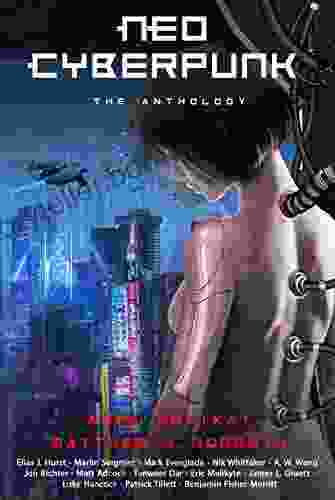
 Keith CoxNEO CYBERPUNK: AN ANTHOLOGY BY MATTHEW GOODWIN - A Glimpse into the Dystopian...
Keith CoxNEO CYBERPUNK: AN ANTHOLOGY BY MATTHEW GOODWIN - A Glimpse into the Dystopian...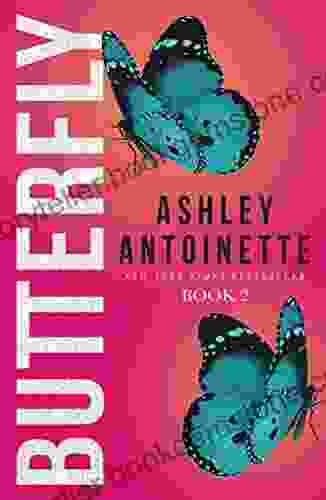
 Jaime MitchellUnveiling the Enchanting World of Butterfly Ashley Antoinette: A Symphony of...
Jaime MitchellUnveiling the Enchanting World of Butterfly Ashley Antoinette: A Symphony of...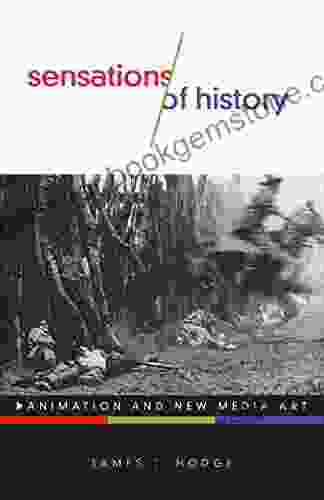
 Melvin BlairAnimation And New Media Art: The Intersection of Art, Technology, and Moving...
Melvin BlairAnimation And New Media Art: The Intersection of Art, Technology, and Moving... Desmond FosterFollow ·13.9k
Desmond FosterFollow ·13.9k Craig BlairFollow ·4.5k
Craig BlairFollow ·4.5k Herman MitchellFollow ·19.3k
Herman MitchellFollow ·19.3k Gene PowellFollow ·5.3k
Gene PowellFollow ·5.3k Clark CampbellFollow ·9.7k
Clark CampbellFollow ·9.7k John MiltonFollow ·13.3k
John MiltonFollow ·13.3k Grant HayesFollow ·3.4k
Grant HayesFollow ·3.4k Paul ReedFollow ·10.3k
Paul ReedFollow ·10.3k
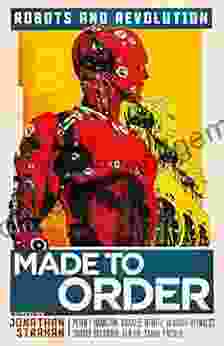
 Braden Ward
Braden WardMade to Order Robots and the Coming Revolution
Robots are becoming increasingly common...
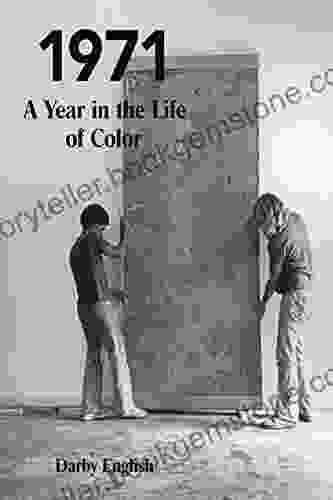
 Clay Powell
Clay Powell1971: A Year in the Life of Color
The year 1971 was a pivotal one for color....
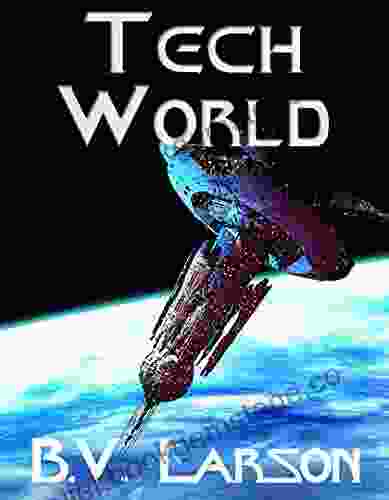
 Ralph Waldo Emerson
Ralph Waldo EmersonTech World's Undying Mercenaries: A Deep Dive into the...
In the ever-evolving landscape of the...
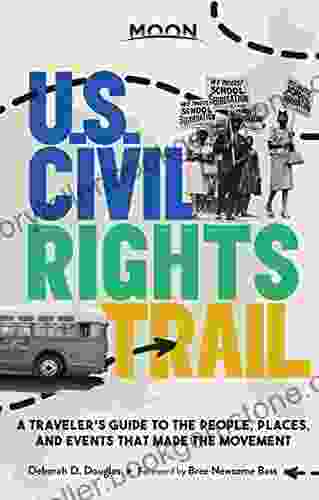
 Wade Cox
Wade CoxThe Ultimate Traveler's Guide to the People, Places, and...
Travel has always been a part of the human...
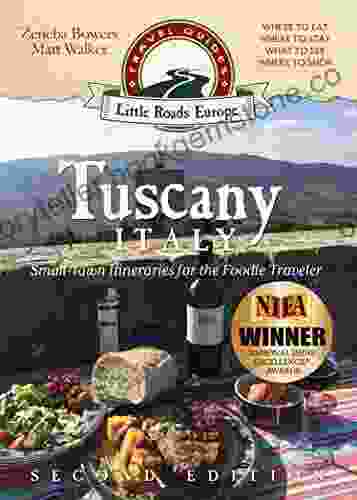
 Evan Simmons
Evan SimmonsA Comprehensive Guide: Uncovering Small Town Culinary...
: A Culinary Odyssey Beyond the City...
4.8 out of 5
| Language | : | English |
| File size | : | 2958 KB |
| Text-to-Speech | : | Enabled |
| Print length | : | 288 pages |
| Lending | : | Enabled |
| Screen Reader | : | Supported |


